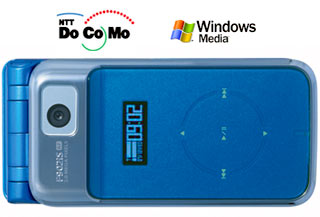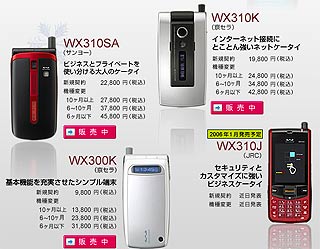Tokyo's amazing week: UK/Jpn JV, 'SoftBank Mobile' and MNP
Watching the business of wireless in Japan just keeps getting better!
Last week brought a slew of new announcements, including news of the JPY11 bn SoftBank/Vodafone joint venture, confirmation that the company formerly known as Vodafone KK will henceforth be known as ‘SoftBank Mobile’ and details on the long-awaited MNP (mobile number portability) implementation. Subscribers can access WWJ’s insight on the first two in today’s Viewpoint (here), but read on below for our take on MNP — possibly the biggest revolution in Japan mobile since i-mode itself.
First, a little history.
Until now, the Big Three cellular carriers (DoCoMo, KDDI/au and Vodafone), as well as the smaller PHS carriers (Willcom, Astel, etc.), have run their networks as independent — and highly competitive — fiefdoms. There has been nothing like number portability or, for that matter, portability of any other service/feature. If you switched carriers, you lost your number…


 In a rare quadruple play, DoCoMo today issued three new handset announcements plus one new technology tie-up press release. The first handset news includes the long-expected new credit-card-enabled phones that will come bundled with the carrier’s ‘DCMX’ Java-and-IC-chip-based credit card. The new
In a rare quadruple play, DoCoMo today issued three new handset announcements plus one new technology tie-up press release. The first handset news includes the long-expected new credit-card-enabled phones that will come bundled with the carrier’s ‘DCMX’ Java-and-IC-chip-based credit card. The new  This week marked a major milestone for WWJ! In one form or another, I’ve been writing this email newsletter for five years — and what a five year term it’s been!
This week marked a major milestone for WWJ! In one form or another, I’ve been writing this email newsletter for five years — and what a five year term it’s been! “Despite the high prices, there were huge line-ups waiting to buy the new Willcom PHSes,” said my Kiwi pal in an email last night. It looks like some of Willcom’s PHS phones appear to be selling well on the strength of flat-rate voice and data and handsets that are at least comparable to the high-end 3G cellular models from the Big Three carriers. Is this a hint of price destruction to come when the new licensees jump into the market in 2006?
“Despite the high prices, there were huge line-ups waiting to buy the new Willcom PHSes,” said my Kiwi pal in an email last night. It looks like some of Willcom’s PHS phones appear to be selling well on the strength of flat-rate voice and data and handsets that are at least comparable to the high-end 3G cellular models from the Big Three carriers. Is this a hint of price destruction to come when the new licensees jump into the market in 2006?